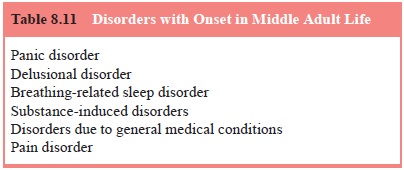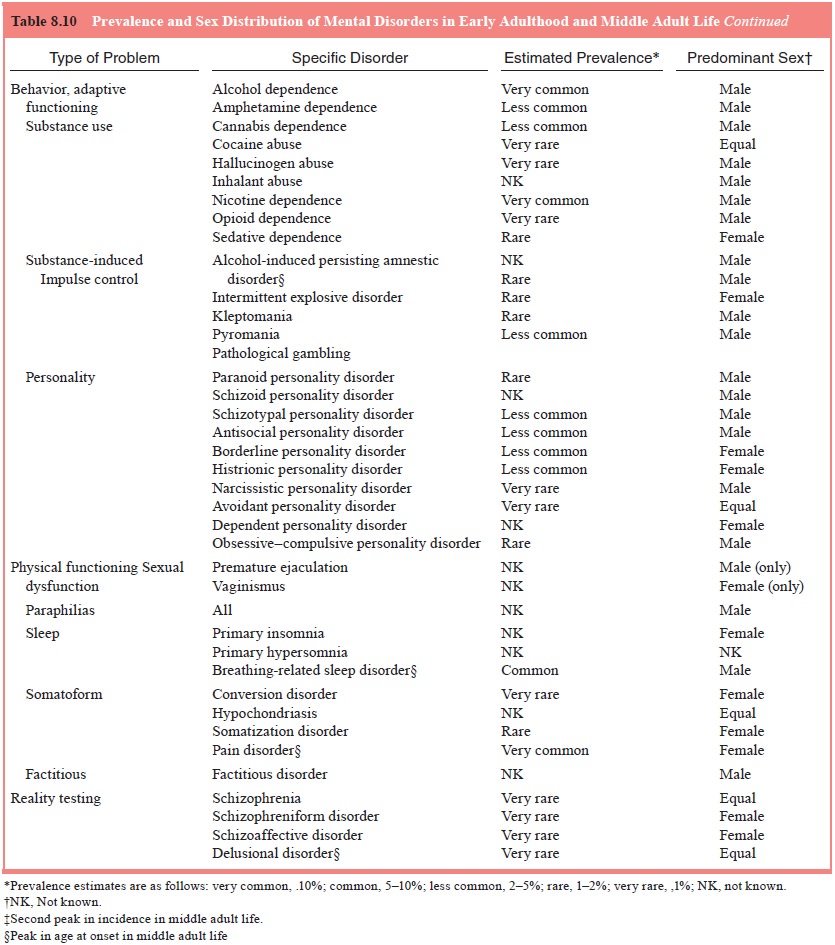Chapter: Essentials of Psychiatry: Psychopathology Across the Life-Cycle
Problems of Middle Adult Life
Problems of Middle Adult Life
Middle Adult Development
Middle adult life may be applied to ages 30 to 65
years, which are characterized developmentally by consolidation and
generativity in career and family life. Although potentially the most
productive years of life, they are also fraught with obstacles and frustrations
in the achievement of personal goals. Common stressors include marriage and
divorce, parenting, career setbacks, recognition of unattainable goals and
death of parents. Any of these may serve as the focus of a midlife crisis.
Types of Problems
Psychosocial stressors may precipitate episodes of
already exist-ing disorders of virtually any type or initiate disorders de novo. Relatively few disorders have a
typical onset between 30 and 65 years (Table 8.11). They include particular
anxiety, psychotic, sleep and substance-related disorders, and disorders
associated with general medical conditions

General Medical Conditions
Because medical conditions have increased incidence during adult life, psychopathological conditions resulting from the direct physiological effects of general medical conditions are on the rise. General medical conditions (and their treatments) can cause delirium, dementia, amnestic disorder, psychotic disorder, mood disorder, anxiety disorder, catatonic disorder, sexual dysfunction, sleep disorder and personality disorder.
Medical conditions can also act as psychosocial
stressors (Popkin et al., 1987), in
which case the prognosis also depends on the management of the stress and the
treatment of the mental disorder.
The estimated prevalence and sex distribution of
the few mental disorders with a peak in age at onset in middle adult life are
included in Table 8.10

Related Topics